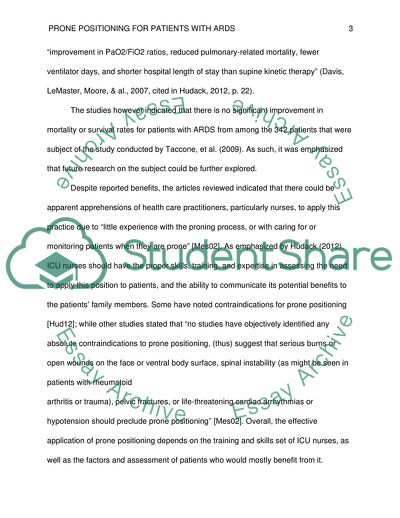Prone position in ARDS Essay Example | Topics and Well Written Essays - 500 words. https://studentshare.org/nursing/1793607-prone-positioning-for-patients-with-ards
Prone Position in ARDS Essay Example | Topics and Well Written Essays - 500 Words. https://studentshare.org/nursing/1793607-prone-positioning-for-patients-with-ards.


